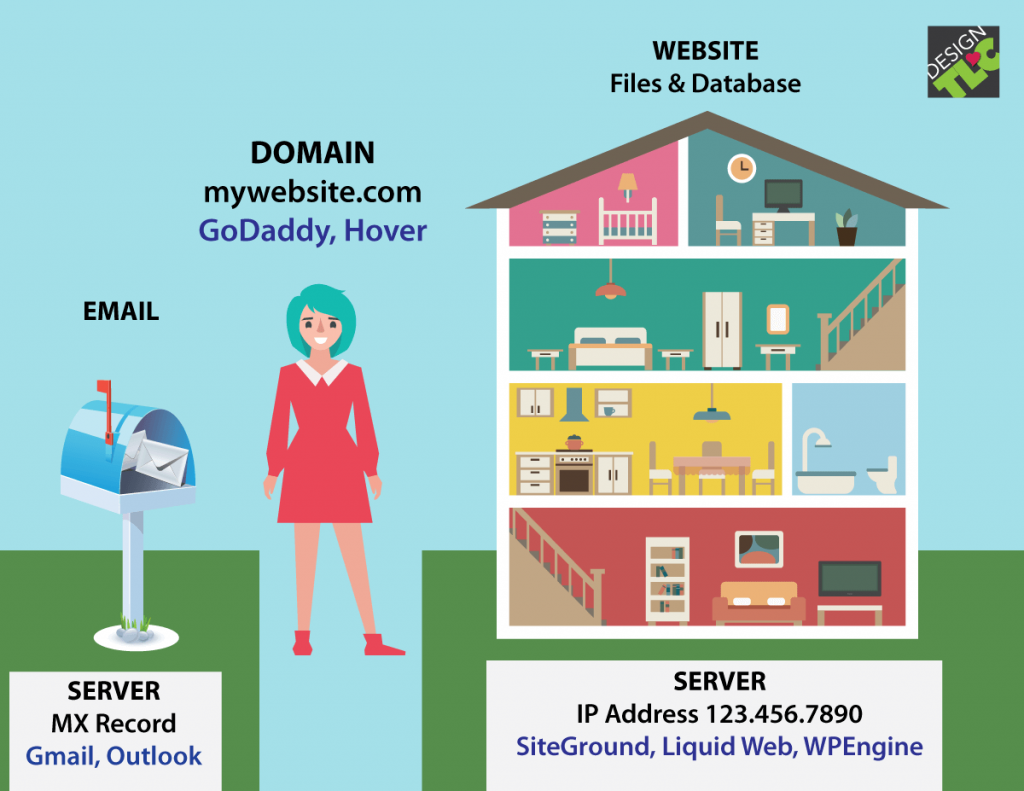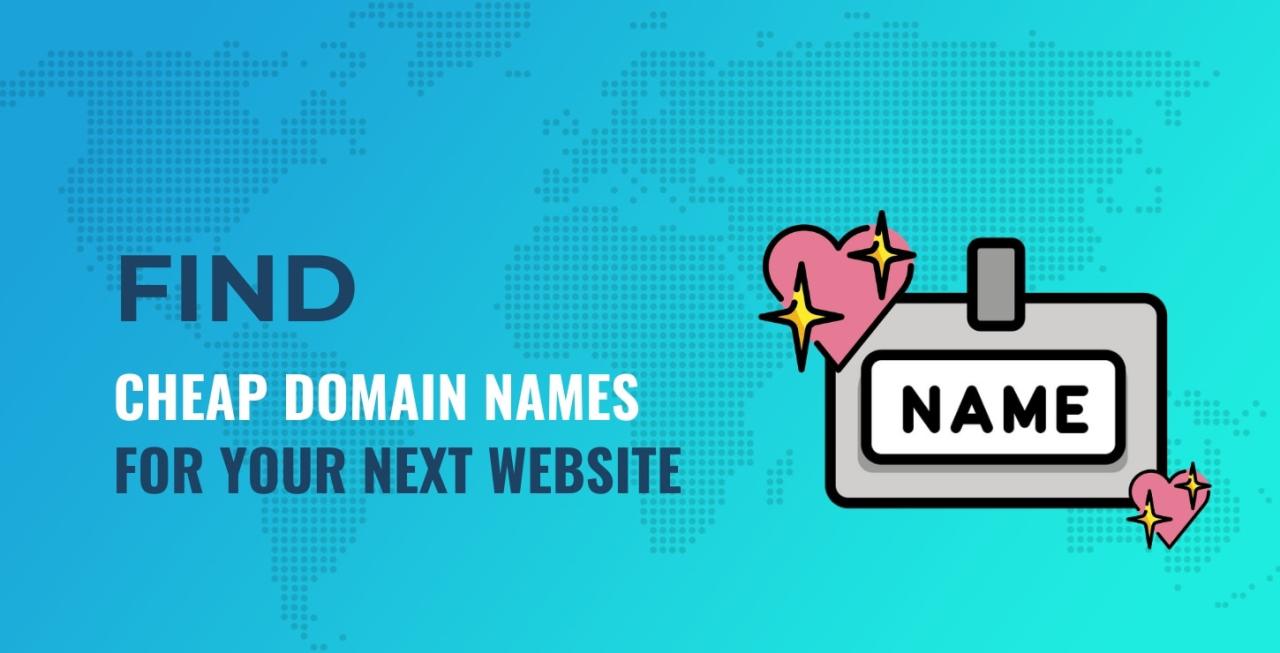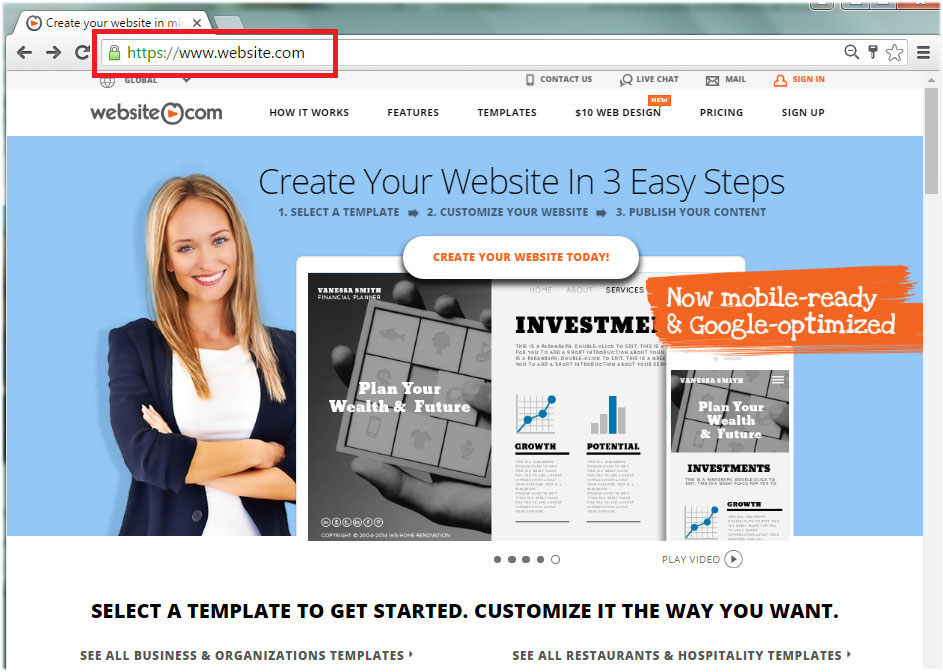Domain and website are the cornerstones of your online presence, acting as your digital address and virtual storefront. From choosing the perfect domain name to crafting an engaging website, every aspect plays a crucial role in establishing your brand and attracting your target audience.
This comprehensive guide explores the intricate world of domain and website creation, covering everything from fundamental concepts to advanced strategies. We’ll delve into the essential elements of website structure, design, and content optimization, ensuring your online platform is both aesthetically pleasing and functionally robust.
Domain Name Fundamentals
In the vast digital landscape, domain names serve as the unique addresses of websites, providing a crucial link between users and online content. Understanding the purpose and significance of domain names is essential for anyone navigating the digital world.
Domain Name Extensions
Domain name extensions, also known as top-level domains (TLDs), are the suffixes that follow the main part of a domain name, such as .com, .org, or .net. These extensions provide information about the purpose or nature of the website.
- .com: This extension is the most common and is generally used for commercial websites, businesses, and organizations.
- .org: Primarily used for non-profit organizations, charities, and educational institutions.
- .net: Originally intended for network service providers, it is now used for a wider range of websites, including technology-related sites.
- .gov: Reserved for government websites.
- .edu: Exclusively for educational institutions.
Importance of Choosing a Relevant and Memorable Domain Name
Choosing a domain name is a crucial step in establishing an online presence. A well-chosen domain name can significantly impact a website’s success by making it easier for users to find, remember, and trust.
A relevant and memorable domain name is crucial for a website’s success.
- Relevance: The domain name should be relevant to the website’s content and target audience. This helps users understand what the website is about and increases the chances of them visiting.
- Memorability: A memorable domain name is easy to recall and share. Short, catchy, and easy-to-spell names are more likely to stick in people’s minds.
- Availability: It is important to ensure that the desired domain name is available for registration. Many popular names are already taken, so it may be necessary to get creative or consider alternative extensions.
Website Structure and Design
A website’s structure and design are crucial for its success. They determine how users navigate, interact with, and ultimately perceive the website. A well-structured and designed website provides a seamless and enjoyable user experience, leading to increased engagement and conversions.
Website Components
A website typically consists of several essential components that work together to create a cohesive whole. These components include:
- Homepage: The first page that visitors see when they access your website. It serves as the central hub and often includes a brief overview of your website’s purpose, key features, and calls to action.
- Navigation: A menu or set of links that allows users to easily move between different sections or pages of the website. Effective navigation is intuitive and helps users find the information they need quickly.
- Content Pages: Pages that contain specific information, such as blog posts, product descriptions, or company information. These pages should be well-organized and easy to read.
- Footer: The bottom section of each page that typically includes copyright information, contact details, and links to other relevant pages.
Effective Website Layouts
Website layouts can significantly impact user experience. Some common and effective layouts include:
- One-column layout: A simple layout with content arranged in a single column. This layout is often used for blogs and content-heavy websites.
- Two-column layout: A layout that divides the content into two columns, typically with a sidebar on one side and the main content on the other. This layout is suitable for websites with a lot of information or features.
- Three-column layout: A layout that divides the content into three columns, often used for websites with a lot of visual content or interactive elements.
Design Principles
Several design principles contribute to a visually appealing and user-friendly website. These principles include:
- Consistency: Maintaining a consistent design throughout the website, including color schemes, typography, and spacing, creates a cohesive and professional look.
- Clarity: Using clear and concise language, well-organized content, and visually appealing elements to make the website easy to understand and navigate.
- Hierarchy: Using different font sizes, colors, and spacing to emphasize important elements and guide the user’s attention.
- White space: Using white space effectively to create visual separation between elements and make the website less cluttered.
User Experience (UX) and User Interface (UI)
User experience (UX) and user interface (UI) are crucial aspects of website design.
UX focuses on the overall experience a user has when interacting with a website. It encompasses aspects like usability, accessibility, and satisfaction.
UI refers to the visual design of the website, including elements like buttons, menus, and forms. A well-designed UI should be intuitive, visually appealing, and easy to use.
UX and UI work together to create a positive user experience. A website with a well-designed UI will be easy to use and navigate, while a website with a strong UX will be enjoyable and satisfying to use.
Website Content and
Website content is the heart and soul of your online presence. It’s what attracts visitors, informs them, and ultimately drives conversions. Crafting compelling and informative content is essential, but it’s equally important to optimize it for search engines to ensure your website reaches the right audience.
Types of Website Content
Website content encompasses a wide range of formats, each serving a distinct purpose and appealing to different user preferences. Here are some common types:
- Text Content: This is the backbone of most websites, providing information, instructions, stories, and more. Blog posts, articles, product descriptions, and FAQs are examples of text content.
- Images: Images add visual appeal and break up text, making content more engaging. They can be used to illustrate concepts, showcase products, or simply add aesthetic value.
- Videos: Videos are highly engaging and can effectively convey information, tutorials, or entertainment. They can be embedded from platforms like YouTube or hosted directly on your website.
- Interactive Elements: Interactive elements like quizzes, polls, calculators, and games enhance user engagement and provide a more dynamic experience.
- Audio Content: Podcasts, music, and audio recordings can be used to share information, entertain, or create a specific atmosphere.
Importance of for Website Content
Search engine optimization () is the process of improving your website’s visibility in search engine results pages (SERPs). It ensures that your content is easily discoverable by users searching for relevant information.
- Increased Visibility: helps your website rank higher in search results, making it more likely that potential customers will find you.
- Targeted Traffic: attracts qualified traffic to your website, meaning visitors are more likely to be interested in your products or services.
- Enhanced User Experience: practices often improve website structure and navigation, making it easier for users to find what they need.
- Brand Authority: Ranking high in search results builds trust and credibility, establishing your brand as an authority in your industry.
Content Optimization Strategies
Optimizing your website content for search engines involves a range of strategies, from research to content formatting. Here’s a table summarizing key optimization techniques:
| Strategy | Description |
|---|---|
| Research | Identifying relevant s that your target audience uses to search for information related to your website’s content. |
| On-Page Optimization | Optimizing individual web pages for specific s, including title tags, meta descriptions, header tags, and image alt text. |
| Content Quality and Relevance | Creating high-quality, informative, and engaging content that satisfies user intent and provides value. |
| Link Building | Acquiring backlinks from reputable websites, which signals to search engines that your content is valuable and trustworthy. |
| Technical | Addressing technical aspects of your website that affect its crawlability and indexability, such as site speed, mobile-friendliness, and XML sitemaps. |
Website Hosting and Maintenance: Domain And Website
Once you’ve built your website, you need a place to store it so that others can access it. This is where website hosting comes in. Website hosting involves renting server space from a hosting provider to store your website’s files and data.
Website hosting is crucial for ensuring your website’s accessibility, security, and performance.
Types of Website Hosting
Website hosting providers offer various hosting plans to cater to different website needs and budgets. Understanding the different types of hosting available helps you choose the most suitable option for your website.
- Shared Hosting: This is the most affordable option, where multiple websites share the same server resources. Shared hosting is suitable for small websites with low traffic and limited resource requirements.
- VPS (Virtual Private Server) Hosting: VPS hosting provides a virtualized server environment, offering more resources and control than shared hosting. This option is suitable for websites with moderate traffic and resource demands.
- Dedicated Hosting: Dedicated hosting provides an entire server dedicated to your website, offering the highest level of performance, security, and control. This option is ideal for large websites with high traffic and resource-intensive applications.
Website Backups and Security Updates
Regular website backups and security updates are essential for protecting your website from data loss and security threats.
- Website Backups: Regularly backing up your website data ensures that you can restore your website to a previous state in case of data loss due to technical issues, accidental deletion, or malicious attacks. Consider implementing automated backup solutions for regular and reliable backups.
- Security Updates: Websites are constantly vulnerable to security threats, so it’s crucial to keep your website software and plugins up to date. Regular security updates patch vulnerabilities and protect your website from potential attacks.
Choosing a Reliable Website Hosting Provider
Selecting a reliable website hosting provider is crucial for your website’s success.
- Reliability and Uptime: Choose a hosting provider with a proven track record of high uptime and reliability. Look for providers with a 99.9% uptime guarantee, ensuring your website is available to visitors most of the time.
- Customer Support: Opt for a provider that offers excellent customer support, readily available through various channels like live chat, phone, or email. Responsive and helpful support ensures you receive timely assistance when needed.
- Scalability: Choose a hosting provider that offers scalable hosting plans to accommodate your website’s growth. Scalability ensures you can upgrade your hosting plan as your website traffic and resource demands increase.
- Security Features: Look for a hosting provider that offers robust security features, including firewalls, malware scanning, and SSL certificates. These features help protect your website from security threats and ensure visitor data privacy.
Website Analytics and Tracking

Website analytics is a vital tool for understanding how users interact with your website and how it’s performing. It allows you to track various metrics, such as website traffic, user behavior, and conversions, providing valuable insights into your website’s effectiveness.
Understanding User Behavior
Website analytics tools track user interactions on your website, allowing you to gain insights into how users navigate, what they click on, how long they stay on each page, and how they interact with your content. This data helps you understand what users are interested in, what they find valuable, and where they might be encountering challenges.
Popular Website Analytics Tools
Several popular website analytics tools can help you track and analyze your website’s performance.
- Google Analytics: A free and comprehensive tool that offers a wide range of features, including real-time data, audience insights, and conversion tracking.
- Adobe Analytics: A more advanced tool that provides detailed insights into user behavior, campaign performance, and customer journeys.
- Matomo: An open-source analytics platform that offers privacy-focused tracking and customizable reporting.
Identifying Areas for Improvement
By analyzing website analytics data, you can identify areas where your website can be improved. For example:
- Bounce Rate: A high bounce rate indicates that users are leaving your website quickly after landing on a specific page. This could be due to poor content, slow loading times, or confusing navigation. Analyzing the pages with high bounce rates can help you identify and address these issues.
- Conversion Rate: If your website is designed to drive conversions, such as sales or lead generation, tracking your conversion rate is crucial. Low conversion rates could be a sign of poor user experience, ineffective calls to action, or a lack of clarity in your website’s purpose.
- User Flow: Analyzing the path users take through your website can reveal bottlenecks or areas where users get lost. This data can help you optimize your website’s navigation and structure to improve user experience and increase conversions.
Website Analytics and Tracking, Domain and website
Website analytics plays a crucial role in understanding user behavior and improving your website’s performance. By using the right tools and analyzing the data, you can gain valuable insights into what’s working and what needs improvement. This data-driven approach helps you make informed decisions about your website’s content, design, and overall strategy, ultimately leading to a more successful online presence.
Website Security and Privacy

In today’s digital landscape, safeguarding your website and the data of your users is paramount. This section delves into the crucial aspects of website security and privacy, exploring measures to protect your website from threats and ensure compliance with data protection regulations.
Website Security Measures
Website security is essential to protect your website and your users’ data from unauthorized access, cyberattacks, and other threats. Implementing robust security measures is vital to maintain trust and prevent data breaches.
- SSL Certificates: SSL certificates are digital certificates that encrypt the communication between a website and a user’s browser, ensuring secure transmission of sensitive information such as passwords, credit card details, and personal data. This is crucial for websites that handle financial transactions, user logins, or any sensitive data. The presence of an SSL certificate is indicated by the “https” prefix in the website address and a padlock icon in the browser’s address bar.
- Firewalls: Firewalls act as a barrier between your website and the external network, filtering incoming and outgoing traffic and blocking malicious attempts to access your website. They monitor network traffic, identify and block suspicious activity, and protect your website from unauthorized access.
- Strong Passwords and Two-Factor Authentication: Using strong passwords and implementing two-factor authentication for user accounts adds an extra layer of security. Strong passwords should be a combination of uppercase and lowercase letters, numbers, and symbols, and should not be easily guessable. Two-factor authentication requires users to provide an additional piece of information, such as a code sent to their phone, in addition to their password, making it more difficult for unauthorized individuals to gain access to accounts.
- Regular Security Updates: Keeping your website software, plugins, and themes up-to-date is essential to patch security vulnerabilities that could be exploited by attackers. Regular updates ensure that your website is protected against the latest threats and exploits.
- Website Backup: Regularly backing up your website data is crucial to recover from data loss or breaches. In the event of a security incident or technical failure, having a recent backup allows you to restore your website to its previous state, minimizing data loss and downtime.
Privacy Regulations
Adhering to privacy regulations is crucial for websites that collect and process user data. These regulations aim to protect user privacy and ensure responsible data handling practices.
- GDPR (General Data Protection Regulation): The GDPR is a comprehensive data protection law in the European Union that applies to all organizations that process personal data of individuals residing in the EU, regardless of their location. It emphasizes user rights, data minimization, and transparency in data processing.
- CCPA (California Consumer Privacy Act): The CCPA is a privacy law in California that grants consumers the right to know what personal information is collected about them, the right to delete that information, and the right to opt-out of the sale of their personal information.
Protecting User Data
Protecting user data is a fundamental responsibility for website owners. Implementing strong security measures and adhering to privacy regulations are crucial for maintaining user trust and ensuring data security.
- Data Minimization: Collect only the necessary data for the specific purpose of your website. Avoid collecting excessive or irrelevant information that is not essential for your website’s functionality or services.
- Data Encryption: Encrypt sensitive user data, such as passwords, financial information, and personal details, using strong encryption algorithms. This ensures that even if the data is intercepted, it remains unreadable without the appropriate decryption key.
- Data Access Control: Limit access to user data to authorized personnel and restrict access to sensitive information based on need-to-know principles. Implement strong access controls and user authentication mechanisms to prevent unauthorized access.
- Data Retention Policies: Establish clear data retention policies and guidelines for storing and deleting user data. Delete unnecessary data regularly and ensure that data is only retained for as long as it is needed for the purpose for which it was collected.
- Transparency and User Consent: Be transparent about the data you collect, how you use it, and with whom you share it. Obtain explicit user consent before collecting and processing personal data. Provide clear and concise privacy policies that explain your data handling practices.
Website Accessibility and Inclusivity
In today’s digital landscape, it’s crucial to ensure that websites are accessible to everyone, regardless of their abilities. Designing websites with accessibility in mind fosters inclusivity and creates a more equitable online experience.
Accessibility Features
Accessibility features enhance the usability of websites for individuals with disabilities. These features help to overcome barriers and enable everyone to access and engage with online content.
- Alt Text for Images: Alt text (alternative text) is a brief description of an image that screen readers can read aloud to visually impaired users. It also helps search engines understand the image’s content. For example, instead of just “image,” you could write “A photo of a smiling woman holding a dog.”
- Screen Reader Compatibility: Screen readers are software programs that read aloud the content of a webpage. Websites should be designed to be compatible with screen readers, ensuring that all text, headings, and interactive elements are properly labeled and structured.
- Keyboard Navigation: Users with motor impairments may rely on keyboard navigation to interact with websites. All website elements should be accessible and navigable using the keyboard.
- Color Contrast: Websites should have sufficient color contrast between text and background to make it easy for users with visual impairments to read. This also helps users with dyslexia and other reading difficulties.
- Captioning and Transcripts: Videos and audio content should be captioned and transcribed to make them accessible to users who are deaf or hard of hearing.
Creating Inclusive Websites
Creating inclusive websites goes beyond implementing accessibility features. It involves a broader approach that considers the needs and preferences of diverse audiences.
- Language and Tone: Use clear, concise language that is easy to understand. Avoid jargon and technical terms that may not be familiar to everyone. Consider using plain language principles to make your content accessible to a wider audience.
- Cultural Sensitivity: Be mindful of cultural differences when designing and developing your website. Avoid using images or language that could be offensive or insensitive to certain cultures. For example, consider using diverse models in your images and avoid using language that could be interpreted as biased.
- Mobile Optimization: A significant portion of internet users access websites on mobile devices. Ensure your website is responsive and optimized for mobile viewing. This includes using a mobile-friendly layout, adjusting font sizes, and optimizing images for mobile screens.
- User Feedback: Regularly gather feedback from users with disabilities and other diverse groups to identify areas for improvement and ensure your website is inclusive and accessible to all.
Website Marketing and Promotion
A website, no matter how well-designed or informative, is useless without a strategy to attract visitors. Website marketing plays a crucial role in driving traffic and engagement, ensuring your website reaches its target audience and achieves its goals.
Website Marketing Strategies
Website marketing encompasses various strategies designed to increase website visibility, attract potential customers, and ultimately drive conversions. Here are some prominent approaches:
Search Engine Optimization ()
is the process of optimizing your website to rank higher in search engine results pages (SERPs) for relevant s. This involves optimizing website content, structure, and technical aspects to make it more appealing to search engines like Google.
Social Media Marketing
Social media platforms like Facebook, Twitter, Instagram, and LinkedIn offer powerful tools for reaching a wider audience and promoting your website. This involves creating engaging content, running targeted ads, and interacting with followers to build brand awareness and drive traffic to your website.
Content Marketing
Content marketing involves creating and distributing valuable, relevant, and consistent content to attract and retain a clearly defined audience. This can include blog posts, articles, infographics, videos, and more. By providing valuable content, you can establish yourself as an authority in your field, attract new customers, and drive traffic to your website.
Email Marketing
Email marketing involves sending targeted emails to subscribers to promote your website, products, or services. This can be a highly effective way to nurture leads, build relationships, and drive conversions.
Paid Advertising
Paid advertising platforms like Google Ads and social media advertising allow you to target specific demographics and interests with your marketing messages. This can be an effective way to reach a wider audience and drive immediate results.
Affiliate Marketing
Affiliate marketing involves partnering with other businesses or individuals to promote your website or products. This can be a cost-effective way to reach new audiences and drive sales.
Public Relations (PR)
Public relations involves building relationships with media outlets and influencers to promote your website and brand. This can help you generate positive publicity, increase brand awareness, and drive traffic to your website.
Influencer Marketing
Influencer marketing involves partnering with influential individuals in your niche to promote your website or products. This can be a highly effective way to reach a targeted audience and build trust and credibility.
Pros and Cons of Different Website Marketing Approaches
| Approach | Pros | Cons |
|---|---|---|
|
|
|
| Social Media Marketing |
|
|
| Content Marketing |
|
|
| Email Marketing |
|
|
| Paid Advertising |
|
|
| Affiliate Marketing |
|
|
| Public Relations |
|
|
| Influencer Marketing |
|
|
Website Development and Management Tools
Building a website requires the right tools. These tools range from content management systems to website builders, each catering to different needs and skill levels. Understanding these tools and their capabilities is crucial for choosing the right platform for your website.
Content Management Systems (CMS)
Content management systems (CMS) are software applications that allow users to create, manage, and publish website content without needing extensive coding knowledge. CMS platforms offer a user-friendly interface, making it easy to update content, manage pages, and control website functionalities.
- WordPress: The most popular CMS platform, known for its flexibility, vast plugin library, and large community support. WordPress allows for customization, making it suitable for various website types, from blogs to e-commerce stores.
- Joomla: A robust CMS platform with a focus on security and scalability. Joomla is well-suited for complex websites with multiple users and content types.
- Drupal: A highly customizable CMS platform favored for its advanced features and powerful content management capabilities. Drupal is often used for large-scale websites with demanding requirements.
Website Builders
Website builders provide a user-friendly drag-and-drop interface for creating websites without writing code. They offer pre-designed templates and a library of elements, simplifying the website building process.
- Wix: A popular website builder known for its intuitive interface and vast library of templates. Wix is suitable for creating simple websites with minimal coding knowledge.
- Squarespace: A visually appealing website builder with a focus on design and aesthetics. Squarespace offers a wide range of templates and features for creating professional-looking websites.
- GoDaddy Website Builder: A user-friendly website builder with a wide range of features and a focus on ease of use. GoDaddy Website Builder is suitable for creating simple websites quickly and efficiently.
Choosing the Right Tools
The best website development tools depend on specific needs, technical skills, and budget.
- Content Needs: If your website requires frequent content updates and management, a CMS like WordPress or Joomla is a good choice. Website builders can be suitable for simpler content needs.
- Customization: If you need a highly customizable website with advanced features, a CMS like Drupal or WordPress offers greater flexibility. Website builders often have limited customization options.
- Technical Skills: If you have limited coding experience, a website builder is a good option. CMS platforms require some technical knowledge for customization and management.
- Budget: Website builders often offer affordable plans, while CMS platforms may require additional costs for hosting, themes, and plugins.
Conclusion
In the digital age, a well-crafted domain and website are no longer optional – they are essential. By understanding the principles Artikeld in this guide, you can embark on a journey to create a compelling online presence that resonates with your audience, drives engagement, and ultimately contributes to your success. Remember, your domain and website are not just static entities, but dynamic platforms that require ongoing attention, optimization, and adaptation to remain relevant and effective in the ever-evolving digital landscape.
A domain name is like your address on the internet, while a website is the actual content you build on that address. Think of it like owning a piece of land and building a house on it. For example, if you want to download YouTube videos as MP3 or MP4 files directly within your Google Chrome browser, you can use a tool like youtube downloader mp3 mp4 google chrome.
This kind of tool allows you to take advantage of the resources available on the web and bring them directly to your computer. Just like a domain name leads you to a website, these tools can help you access and manage the content you need.




